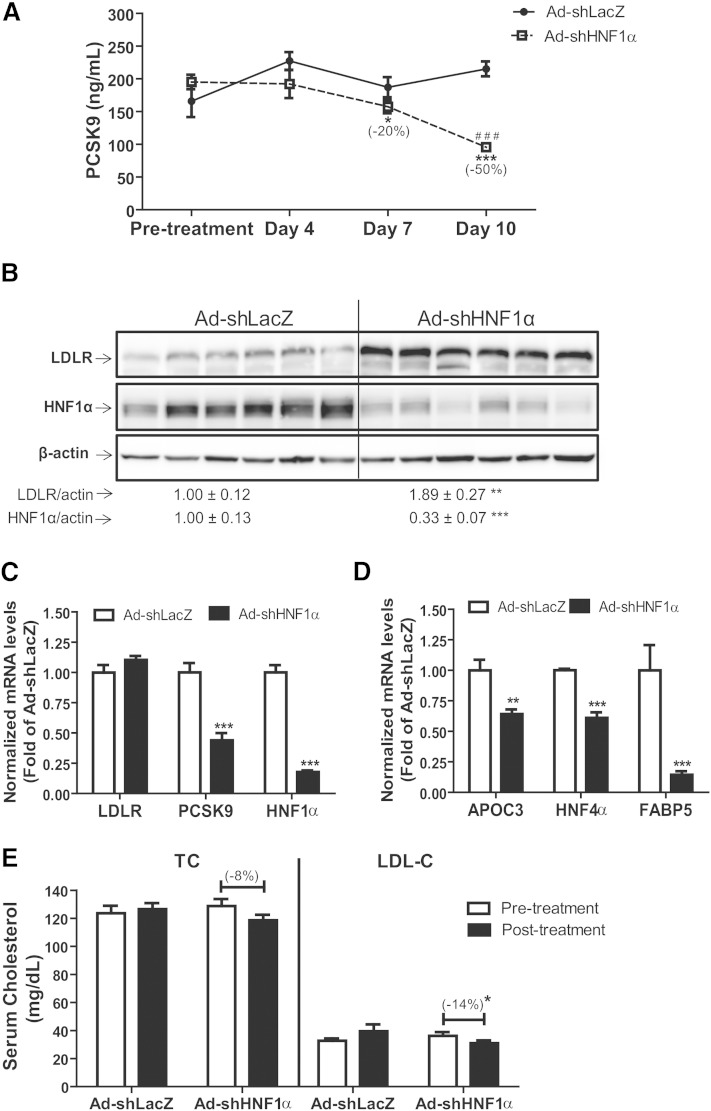Fig. 3.
Decrease in circulating PCSK9 and increased hepatic LDLR after liver-specific knockdown of HNF1α. Wild-type 8–10-week-old male C57BL/6J mice (N = 6 animals per treatment) were retro-orbitally injected with 6 × 109 pfu/mouse of Ad-shLacZ or Ad-shHNF1α adenovirus particles. Four hour-fasted serum samples were collected prior to injection and on days 4, 7, and 10 after infection. A: Serum PCSK9 was measured using ELISA from all serum samples. Data represent (mean ± SEM) PCSK9 concentrations at each time point. *P < 0.05, ***P < 0.001 compared with pretreatment expression levels, and ###P < 0.001 compared with PCSK9 expression in Ad-shLacZ-infected animals at the same time point. B: Western blotting with antibodies to LDLR, HNF1α, and β-actin was conducted. Values are the mean ± SEM of six samples per group. **P < 0.01, ***P < 0.001 compared with the Ad-shLacZ group. C, D: Quantitative real-time PCR was used to determine the relative expression levels (mean ± SEM) of mRNAs of interest. Data represent hepatic mRNA levels of indicated genes after normalization with GAPDH mRNA levels. **P < 0.01, ***P < 0.001 compared with the Ad-shLacZ group which was set at 1. E: Total cholesterol and LDL-C estimations (mean ± SEM) from serum samples. * P < 0.05 compared with the pretreatment levels or Ad-shLacZ group at same time points.

